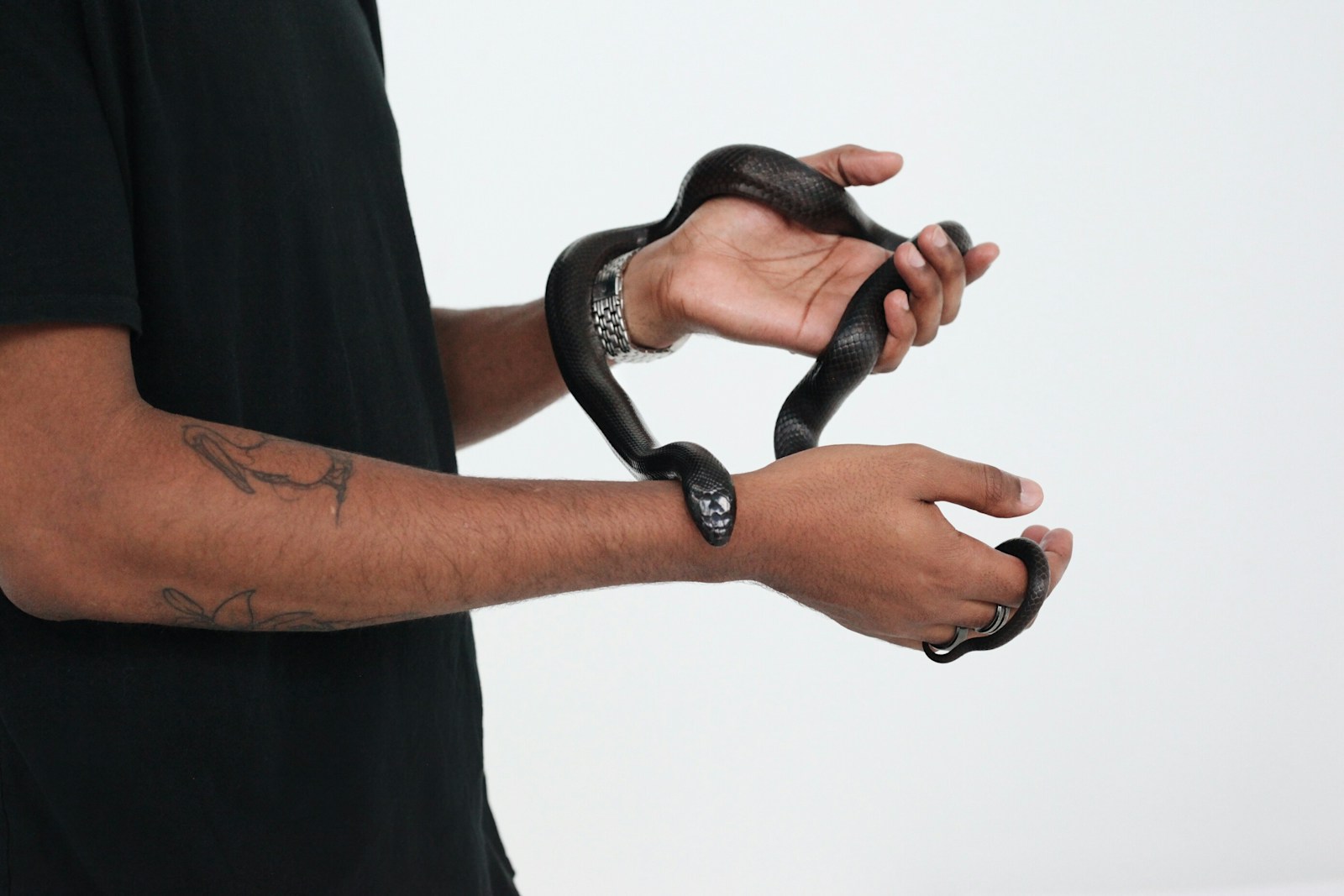Venturing beyond the beginner-friendly ball pythons and corn snakes opens up a fascinating world of serpentine companions for experienced keepers. Advanced snake enthusiasts often seek species that present unique challenges, distinctive behaviors, or remarkable physical characteristics that reward their developed husbandry skills. These specialized reptiles may require precise environmental parameters, particular feeding regimens, or handling techniques that novice keepers might find overwhelming. From the impressive size of large constrictors to the specialized care needs of more temperamental species, advanced snake keeping presents both greater responsibilities and deeper rewards. This guide explores exceptional snake species that experienced keepers can consider adding to their collections, highlighting their specific requirements, natural behaviors, and the special considerations that make them suitable only for those with established reptile husbandry skills.
Reticulated Pythons (Python reticulatus)
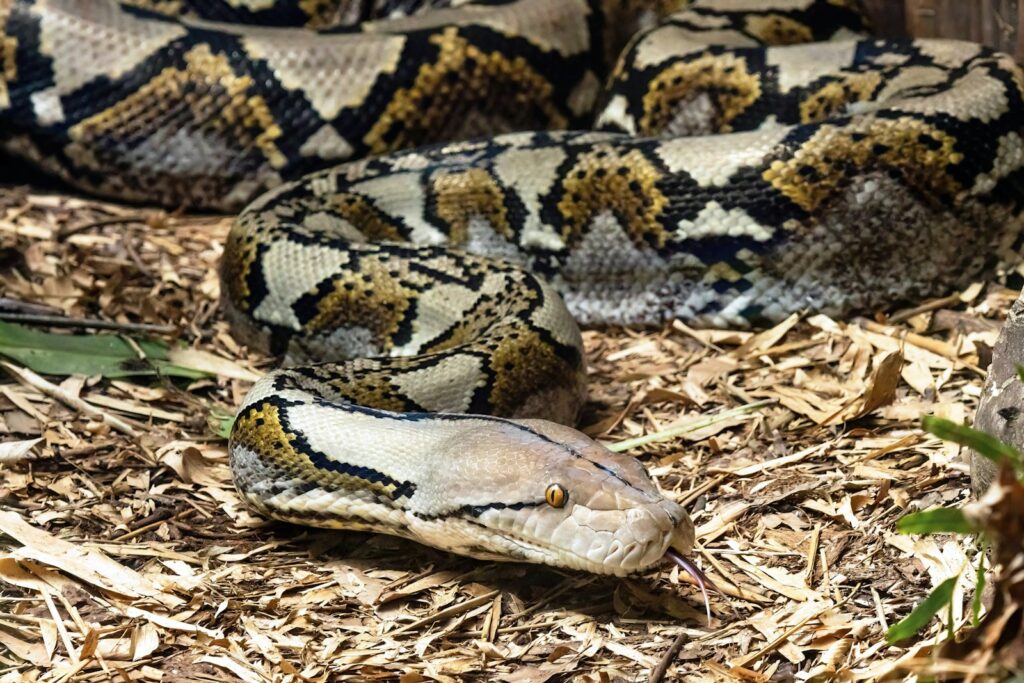
The reticulated python stands as the world’s longest snake species, with specimens potentially reaching over 20 feet in length, making them a truly impressive addition to an experienced keeper’s collection. These magnificent constrictors, native to Southeast Asia, feature stunningly intricate geometric patterns that give them their name and make them among the most visually striking snakes available in captivity. Their considerable size demands spacious enclosures that few keepers can provide, typically requiring custom-built housing that occupies significant floor space and offers proper climbing opportunities. Beyond spatial requirements, experienced keepers must be prepared for their substantial food needs, potential defensive temperament (especially in wild-caught specimens), and the absolute necessity of having multiple handlers present for safe maintenance as the snake grows to full size.
Green Tree Pythons (Morelia viridis)
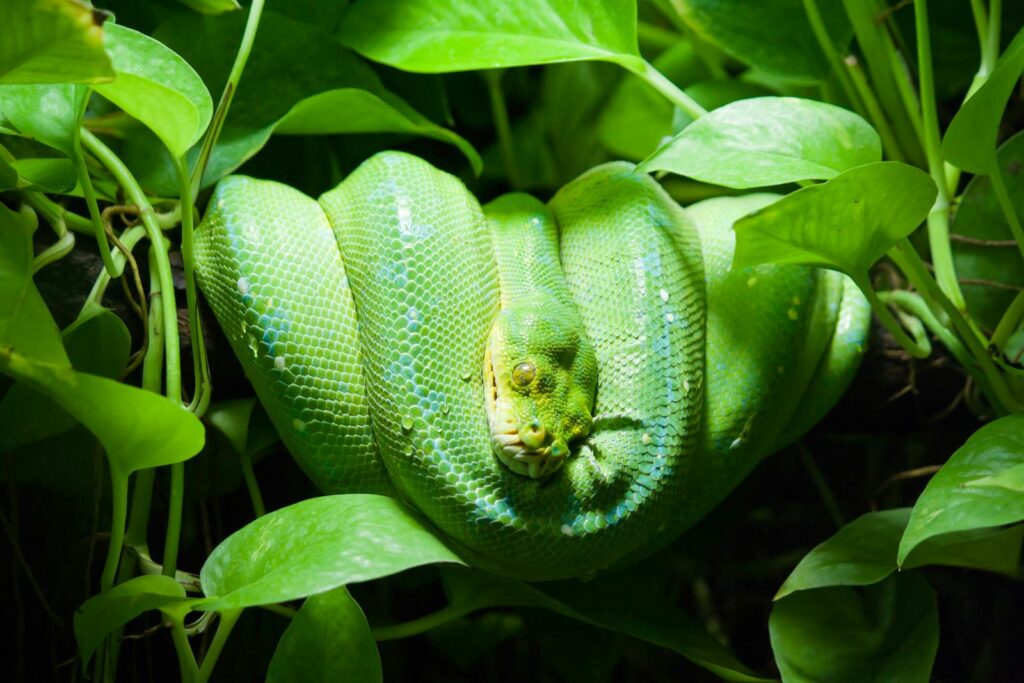
Green tree pythons represent a pinnacle of beauty in the snake world with their vibrant emerald coloration and distinctively arboreal lifestyle that challenges even seasoned keepers. Unlike many beginner species, these pythons undergo a remarkable ontogenetic color change, starting life as either bright yellow or rich red juveniles before transitioning to their signature green as adults, providing a fascinating development process for keepers to witness. Their specialized care requirements include maintaining precise humidity gradients, providing appropriate arboreal perches that accommodate their unique coiling posture, and managing their sometimes unpredictable temperament that can range from tolerant to defensive. The species’ specialized feeding response and preference for elevated hunting positions requires keepers to develop targeted feeding protocols that respect their natural behaviors while ensuring proper nutrition.
Black-Headed Pythons (Aspidites melanocephalus)
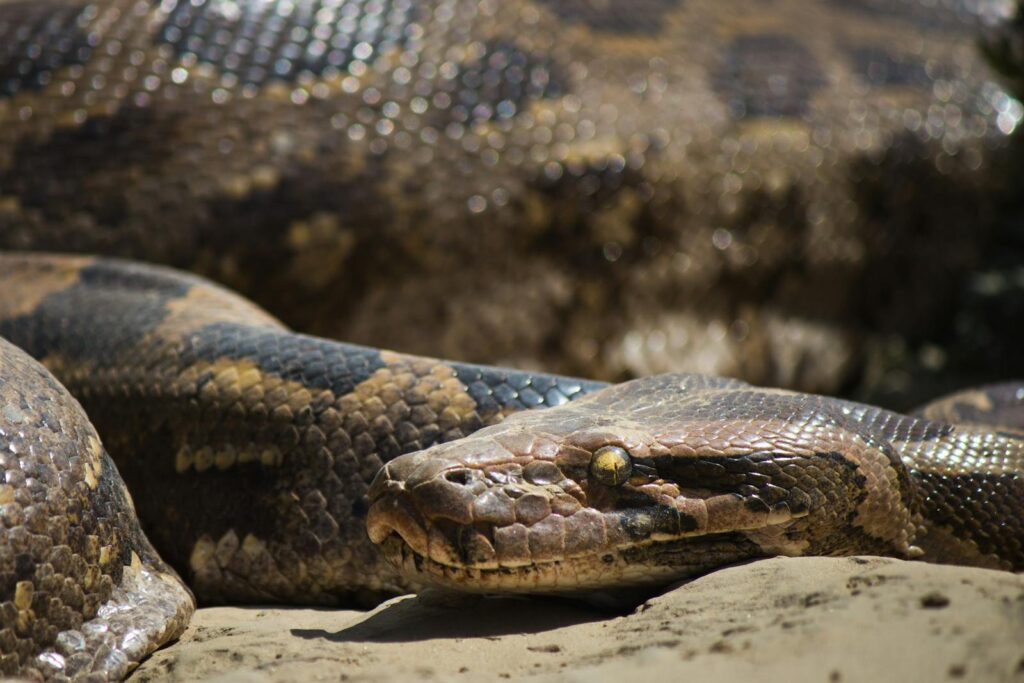
Black-headed pythons from Australia offer experienced keepers a captivating combination of distinctive appearance and specialized care requirements that reward advanced husbandry skills. These unique pythons feature a striking jet-black head that contrasts dramatically with their light-colored bodies patterned with reddish-brown bands, creating an unmistakable aesthetic appeal unlike any other python species. As inhabitants of arid regions, they require carefully managed thermal gradients with significantly higher basking temperatures than many commonly kept pythons, typically needing spots that reach 95°F or higher. Their natural diet consists heavily of reptiles, particularly skinks and other lizards, which means keepers must usually acclimate them to rodent prey through careful feeding techniques and occasional scenting methods. Additionally, their active, inquisitive nature demands secure enclosures with robust locks and careful monitoring, as they’re known for their remarkable strength and escape artist tendencies.
Emerald Tree Boas (Corallus caninus)
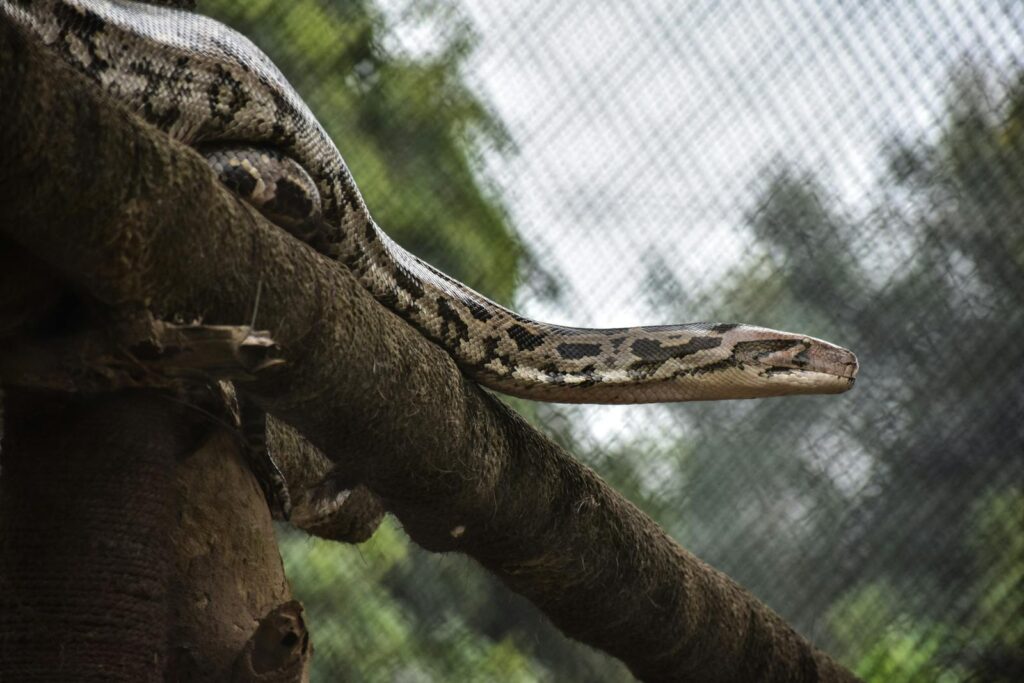
Emerald tree boas represent the pinnacle of arboreal snake keeping, with their stunning green coloration and specialized anatomy making them a prized but challenging species for experienced reptile enthusiasts. These remarkable constrictors possess specialized heat-sensing pits along their labial scales that allow them to detect prey in complete darkness, a fascinating adaptation that experienced keepers can observe during carefully managed nocturnal feeding sessions. Their care requirements present multiple challenges, including maintaining consistently high humidity (70-90%) without creating stagnant conditions that could lead to respiratory infections, a common issue with this species. Temperature management proves equally demanding, as emerald tree boas require a surprisingly cool ambient range (75-82°F) compared to many tropical species, with improper heating being a frequent cause of health problems in captivity. Additionally, their notorious defensive attitude, especially in wild-caught specimens, coupled with long, recurved teeth designed for capturing birds in the canopy, demands respectful handling techniques that prioritize the snake’s comfort and the keeper’s safety.
False Water Cobras (Hydrodynastes gigas)
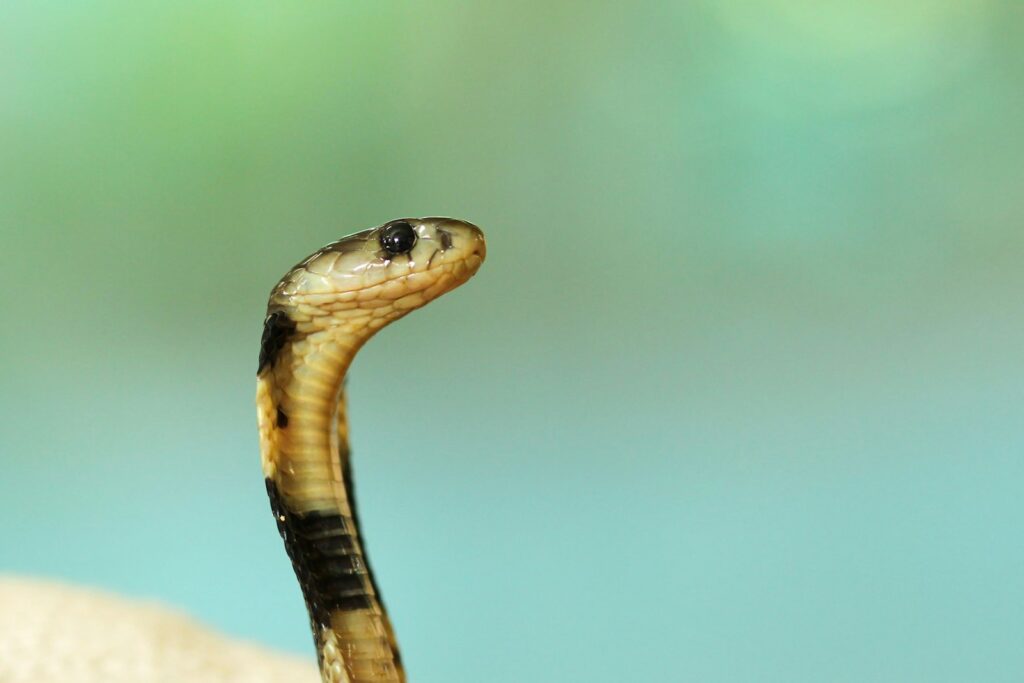
False water cobras represent an exciting challenge for advanced keepers, offering impressive size and intelligence combined with a dramatic defensive display that mimics true cobras despite their non-elapid classification. These South American colubrids can reach impressive lengths of 6-8 feet and demonstrate remarkable problem-solving abilities, often figuring out feeding routines and recognizing their keepers in ways that surprise even experienced reptile enthusiasts. While technically rear-fanged and considered mildly venomous, their bites can cause significant localized swelling and discomfort, making proper handling techniques and respect for their defensive capabilities absolutely essential for keeping them safely. Their semi-aquatic nature in the wild necessitates large enclosures with substantial water features that allow swimming alongside dry basking areas, creating a complex habitat that requires regular maintenance and monitoring. Behaviorally, these snakes remain active during daylight hours, making them fascinating display animals that reward keepers with constant activity and engagement unlike many nocturnal species.
Blood Pythons (Python brongersmai)
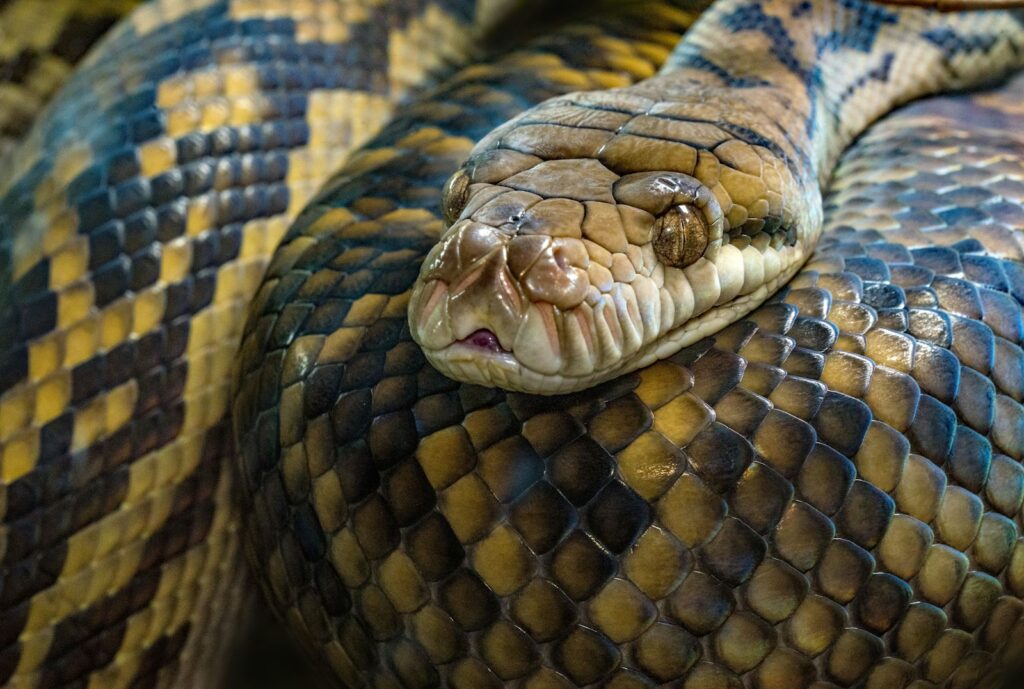
Blood pythons have rightfully earned their reputation as challenging keeper snakes, combining impressive girth with a sometimes unpredictable temperament that demands experienced handling techniques. These terrestrial pythons from Southeast Asia possess incredibly rich coloration ranging from brilliant reds to deep burgundies with intricate black patterning, making them visually spectacular specimens for those who can manage their specific needs. Unlike many arboreal species, blood pythons require specialized ground-level enclosures that prioritize floor space over height, with particular attention paid to substrate selection that helps manage their susceptibility to scale rot and related conditions. Their powerful build and muscular bodies create unique handling challenges, as they rely more on strength than agility when feeling threatened, requiring keepers to develop confident, supportive handling techniques that minimize stress. The species’ sensitivity to environmental parameters extends to their distinct temperature preferences, thriving at slightly lower ambient temperatures than many popular pythons, with improper heating often leading to respiratory infections that experienced keepers must vigilantly monitor.
Boa Constrictors (Boa constrictor)
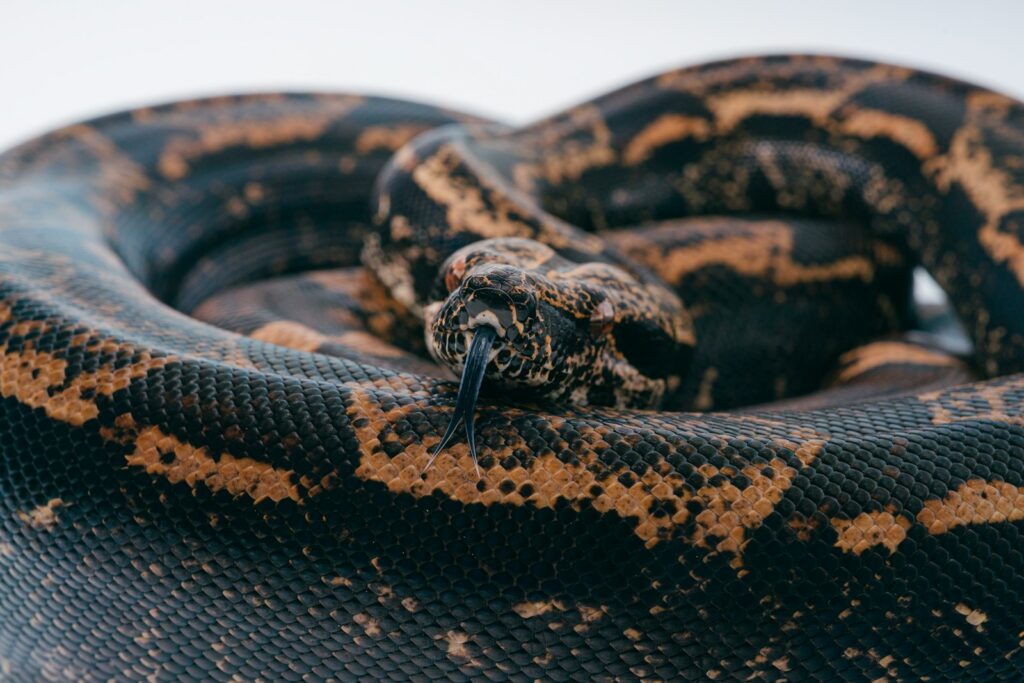
While sometimes recommended for beginners, true boa constrictors—especially larger subspecies like the Argentine or red-tailed varieties—require significant experience to manage properly through their decades-long lifespan. These impressive constrictors can reach lengths exceeding 10 feet and weights of 50-60 pounds, necessitating custom enclosures that accommodate their substantial size while providing appropriate climbing opportunities for their semi-arboreal nature. Their longevity presents a major commitment, with well-cared-for specimens potentially living 25-30 years, requiring keepers to make long-term plans for their housing and care. Female boas grow significantly larger than males, a sexual dimorphism that impacts housing requirements and can create feeding challenges as they mature, sometimes necessitating transition to larger prey items like rabbits or specialized rodent variety. Beyond basic care, experienced keepers must also understand the species’ subtle body language and behavioral cues, as boas can become defensive during seasonal changes or breeding cycles, requiring adjustment of handling routines to maintain a positive relationship.
Russian Rat Snakes (Elaphe schrenckii)

Russian rat snakes offer experienced keepers a fascinating blend of cold-climate adaptations and striking beauty that remains relatively uncommon in collections despite their hardiness. These impressive colubrids, native to frigid regions of Russia, China, and Korea, require a dedicated cooling period (brumation) during winter months to maintain proper health and reproductive cycles, demanding precise temperature management and careful monitoring during this vulnerable period. Their distinctive appearance features a dark base coloration highlighted with vibrant yellow patterns that become more pronounced as they mature, creating a visually striking display animal that rewards proper care with impressive longevity. Despite being non-venomous, Russian rat snakes possess a surprisingly defensive temperament, especially as juveniles, requiring patient handling techniques that respect their natural behaviors while gradually building trust. Their specialized native habitat, which includes rocky terrain and forested regions, should be replicated in captivity with diverse climbing structures, secure hiding spots, and thermal gradients that accommodate their preference for cooler ambient temperatures than many commonly kept species.
African Rock Pythons (Python sebae)
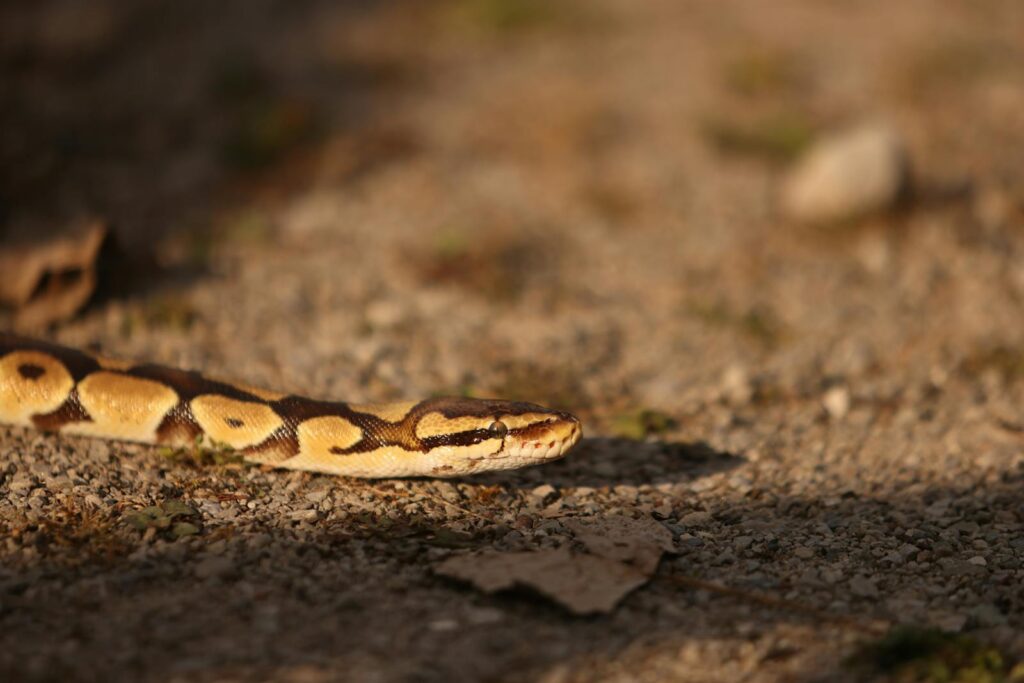
African rock pythons represent one of the most formidable challenges in advanced snake keeping, combining massive size potential with a notoriously unpredictable temperament that demands genuine expertise. These impressive constrictors rank among the world’s largest snakes, with specimens potentially exceeding 20 feet and weighing over 200 pounds, requiring institutional-grade enclosures that few private keepers can realistically provide. Their defensive nature often persists despite years of captive keeping, with many specimens maintaining an aggressive response to handling that requires extreme caution and often specialized equipment like snake hooks and tubes for safe management. Temperature and humidity requirements prove particularly challenging, as these pythons naturally experience seasonal variations that should be replicated in captivity to maintain proper health and natural behaviors. Beyond physical challenges, potential keepers must navigate complex legal restrictions, as many jurisdictions classify African rock pythons as dangerous animals requiring special permits, insurance, or housing standards that create additional barriers to responsible ownership.
Amazon Tree Boas (Corallus hortulanus)

Amazon tree boas present experienced keepers with an extraordinary variety of color morphs and patterns, ranging from vibrant oranges and reds to subtle grays and browns, all housed within a challenging arboreal package. Unlike their emerald cousins, these adaptable boas display remarkable color variation even within the same litter, offering enthusiasts an opportunity to work with dramatically different-looking specimens while mastering the same husbandry techniques. Their specialized dentition, featuring elongated front teeth designed for capturing birds and mammals in the canopy, creates unique feeding and handling challenges that require careful technique development to avoid painful bites during maintenance. Their enclosure requirements demand attention to arboreal details, with carefully selected branches positioned to support their unique hunting strategy of hanging in an S-shaped curve to ambush passing prey. Despite their smaller size compared to many advanced species, their defensive temperament—particularly in wild-caught specimens—provides a genuine handling challenge that rewards patient keepers with the development of trust and repeated successful interactions over time.
Taiwanese Beauty Snakes (Orthriophis taeniurus friesei)
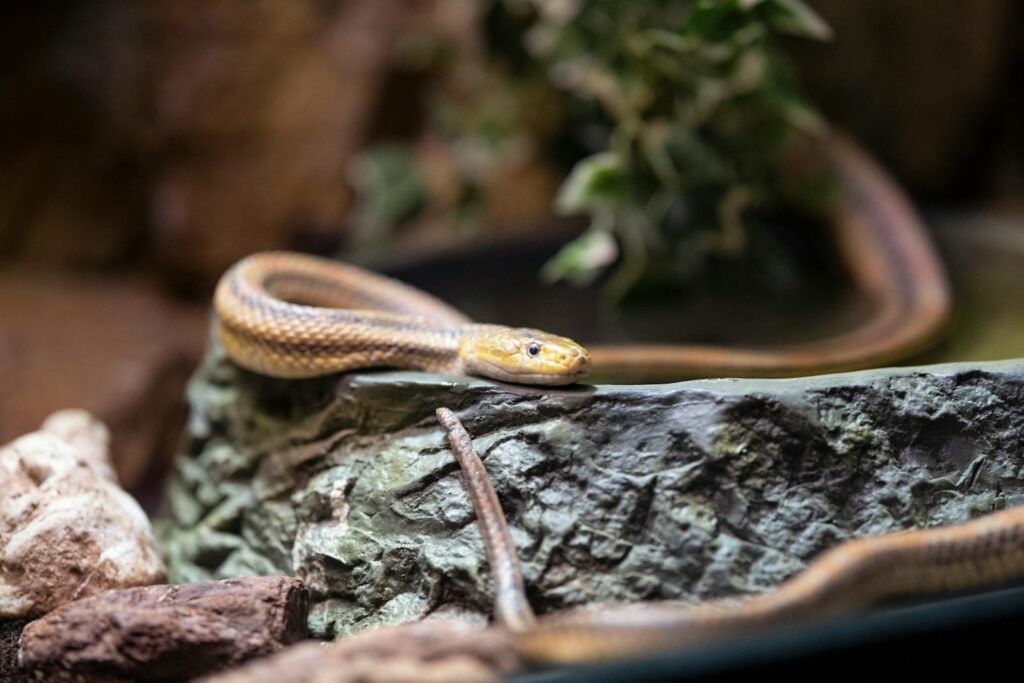
Taiwanese beauty snakes represent an exceptional challenge for colubrid enthusiasts, combining impressive size with striking patterning and specific care requirements that test advanced husbandry skills. These magnificent snakes feature a distinctive striped pattern running the length of their 6-8 foot bodies, terminating in a stunning black and white checkered pattern on their tails that gives them their alternative name of “stripe-tailed beauty snakes.” Their care requirements include maintaining proper humidity levels that balance their need for moisture while preventing scale rot, a common issue in improperly housed specimens. Temperature cycling proves crucial for these temperate-climate natives, with seasonal adjustments including a mild brumation period being essential for long-term health and potential breeding success. Behaviorally, keepers must be prepared for their impressive climbing abilities and escape artist tendencies, requiring secure enclosures with carefully designed lids and potential lock systems to prevent unwanted explorations.
Carpet Pythons (Morelia spilota)

The carpet python complex offers experienced keepers an incredible diversity of subspecies and locality variations, each presenting unique colorations, patterns, and subtle care requirements that reward specialized knowledge. These Australian and New Guinean pythons range dramatically in size depending on subspecies, with jungle carpets typically remaining under 7 feet while coastal varieties may exceed 10 feet, requiring adaptable housing strategies based on the specific variant kept. Their arboreal tendencies demand vertically-oriented enclosures with sturdy climbing structures, though larger subspecies become increasingly terrestrial as they mature and gain weight. Temperature gradients prove particularly important for these adaptable pythons, with proper thermoregulation supporting their generally robust immune systems and active metabolisms. While carpet pythons have earned a reputation for defensive attitudes, experienced keepers recognize the tremendous variation between individuals and subspecies, with diamonds and coastals often displaying more docile temperaments compared to the sometimes nippy jungle and Irian Jaya varieties.
Managing Veterinary Care for Advanced Species
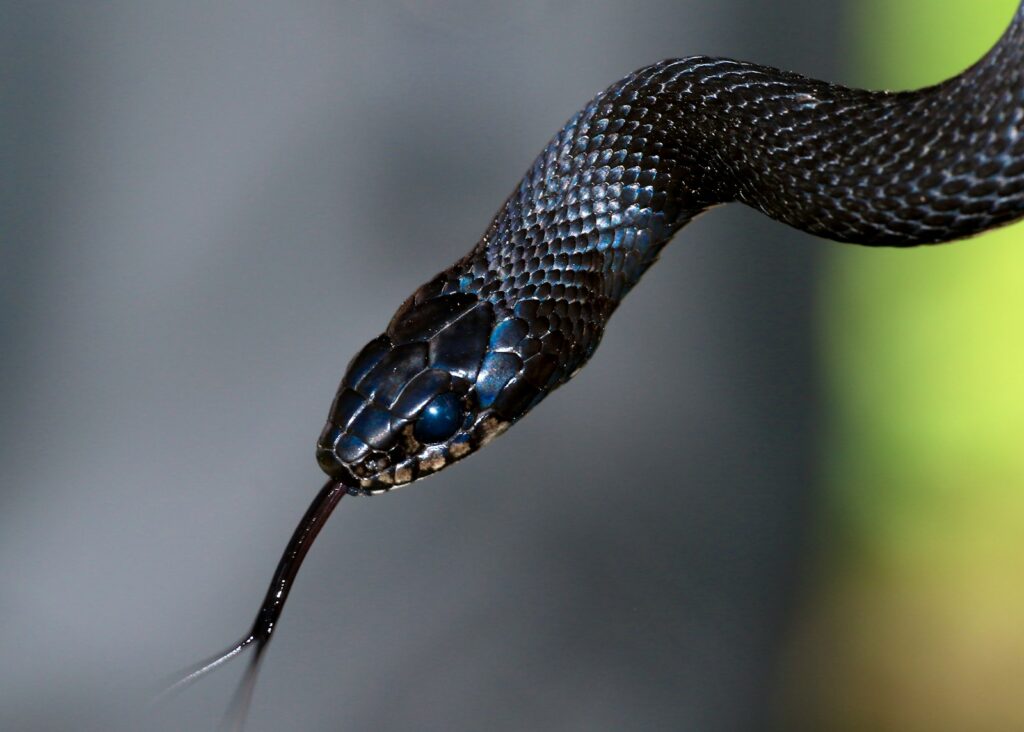
Experienced snake keepers must establish relationships with exotic veterinarians specifically familiar with their advanced species, as many general practice vets lack specialized knowledge of unusual constrictors or colubrids. Preventative health protocols become increasingly important with valuable, specialized species, including regular parasite screenings, weight monitoring systems, and sometimes prophylactic treatments before introduction to established collections. The financial commitment to proper veterinary care represents a significant consideration when keeping advanced species, with diagnostic procedures like radiographs, blood work, and specialized testing often costing substantially more than the purchase price of the animal itself. Before acquiring any advanced species, responsible keepers should research species-specific health concerns, identify qualified veterinary specialists within reasonable travel distance, and budget appropriately for both routine and emergency medical interventions that might become necessary during the animal’s potentially lengthy lifespan.
Conclusion
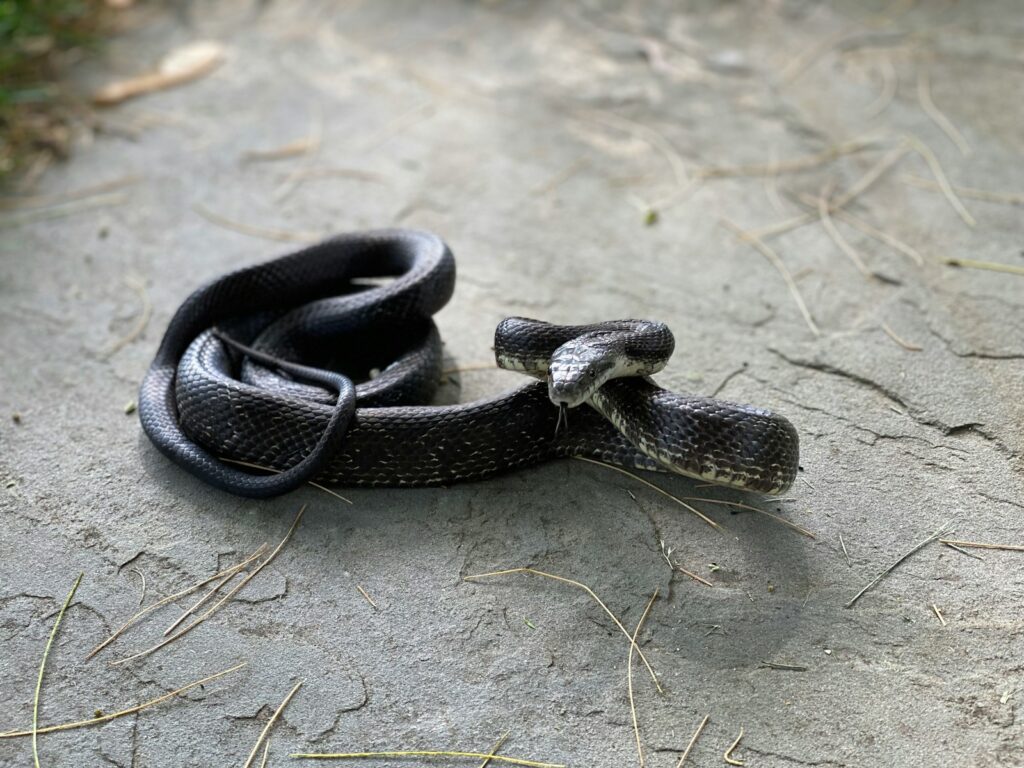
Advanced snake keeping represents a significant commitment to specialized knowledge, appropriate housing, and responsible management that goes well beyond casual reptile ownership. The species highlighted in this guide reward experienced keepers with stunning beauty, fascinating behaviors, and the satisfaction of successfully maintaining complex animals that showcase the keeper’s developed skills. While these snakes aren’t appropriate for beginners, they represent worthy aspirational species for those dedicating themselves to developing comprehensive husbandry abilities. As with all reptile keeping, the welfare of the animal must remain paramount, with acquisition decisions based on realistic assessment of one’s ability to provide appropriate lifelong care. For those with the necessary experience, resources, and dedication, these advanced species offer unparalleled reptile keeping experiences that continue to challenge and educate even after years of successful husbandry.

